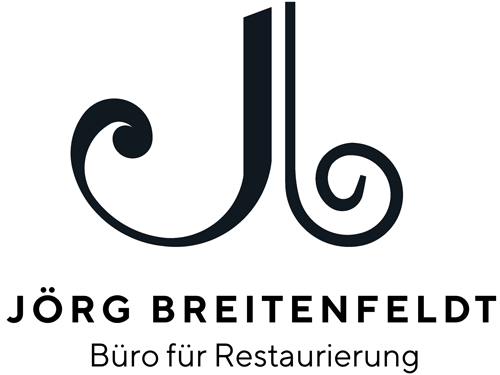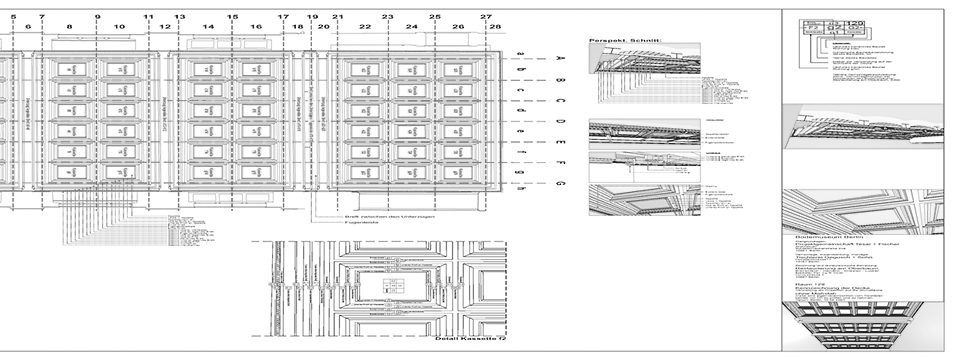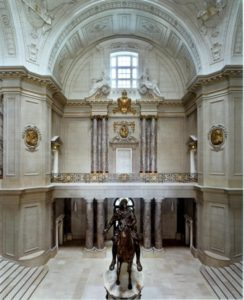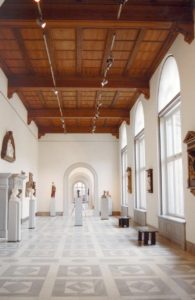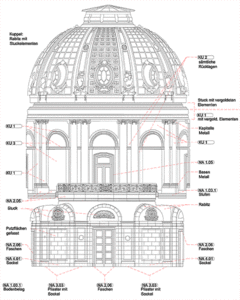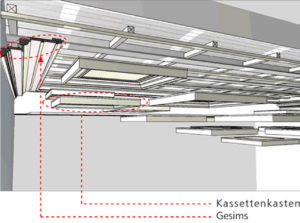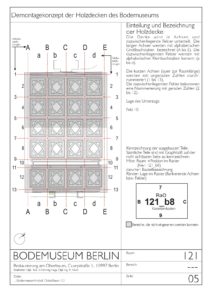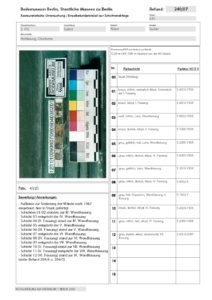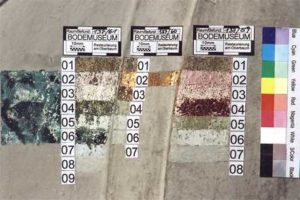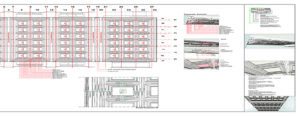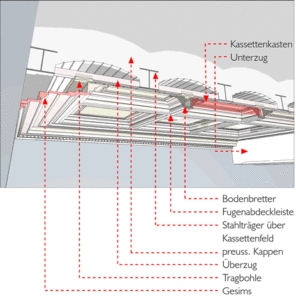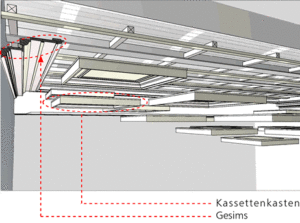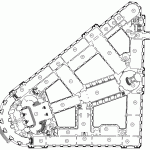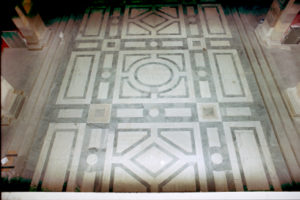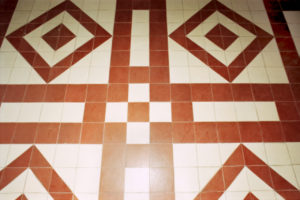Bodemuseum in Berlin
Comprehensive Restoration Assessment of the Historical Design of a Total of 68 Halls and Two Dome Halls
The Museum Island, as a unique ensemble of an educational landscape, represents over 185 years of museum architecture in the heart of Berlin. The reunification of Germany offered a historically unique opportunity to reunite the divided collections in the East and West. In 1999, UNESCO placed Museum Island under its protection as a World Cultural Heritage site.
Restorative investigations were carried out on the completely and multiply painted, formerly material-visible architectural wall divisions, the staircases, and the floor slabs made of natural and artificial stone, stucco, and plaster in the Basilica, the Great Dome Hall/Gallery, and various rooms. Sample areas were established for the investigations. The aim of the measures on the sample areas was to develop suitable methods for the monument-appropriate renovation of the Bode Museum while maximizing substance conservation.
- Identification, mapping, and examination of 32 stone materials for the room finishes such as: marbles, limestones, sandstones, granites, ceramics, artificial stone
- Comprehensive restoration assessment of the historical design of a total of 68 halls and two dome halls, and development of the restoration concept
- Structural investigations, development of disassembly instructions, and creation of restoration concepts for nine valuable wooden ceilings and monitoring of the implementation
- Identification, mapping, and examination of 32 stone materials for the room finishes such as: marbles, limestones, sandstones, granites, ceramics, artificial stone
- Structural investigation and evaluation of all stucco ceilings and development of the restoration concept
Client
Federal Office for Building and Regional Planning (BBR), former Federal Building Directorate Berlin
Implementation Period
2000-2002
